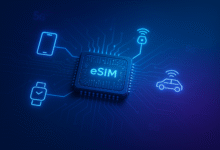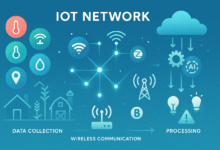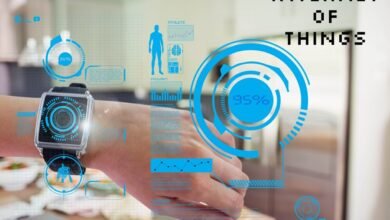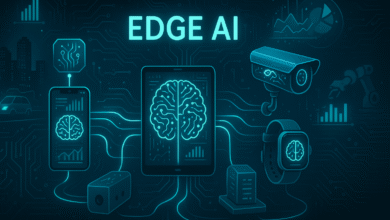5 IoT Lessons Learned Across Industries
Learn 5 critical IoT lessons from industry leaders. Discover proven strategies for successful IoT implementation, security, scalability & ROI optimization.

The Internet of Things (IoT) has transformed from a futuristic concept into a critical business reality across industries worldwide. From manufacturing floors to healthcare facilities, organizations have deployed billions of connected devices, generating valuable insights and driving operational efficiency. However, the journey to successful IoT implementation hasn’t been without its challenges.
As companies navigate the complex landscape of digital transformation, many have learned valuable lessons the hard way. According to recent industry reports by Bain & Company, while 60% of enterprises are implementing IoT solutions, only 30% report truly successful deployments. This gap between adoption and success reveals crucial insights that can guide future IoT strategy decisions.
The experiences of industry leaders across manufacturing, healthcare, smart cities, transportation, and energy sectors have revealed common patterns and pitfalls. Companies like Georgia-Pacific, Rehrig Pacific, and GE have pioneered Industrial IoT (IIoT) implementations, providing valuable case studies for organizations embarking on their own IoT journeys. These real-world deployments have highlighted the importance of focusing on business outcomes rather than technology alone, addressing security concerns from day one, and planning for scalability from the beginning.
Understanding these IoT lessons learned can help organizations avoid costly mistakes and accelerate their path to success. This comprehensive analysis examines five critical insights that have emerged from successful IoT deployments across multiple industries, offering practical guidance for decision-makers planning their own connected device strategies.
1. Start with Business Outcomes, Not Technology Features
One of the most significant IoT lessons learned across industries is the importance of beginning with clear business objectives rather than being captivated by technology capabilities. Many organizations have fallen into the trap of implementing IoT solutions simply because the technology is available, without clearly defining the value they expect to achieve.
Defining Clear Value Propositions
Georgia-Pacific’s approach to digital transformation exemplifies this lesson perfectly. Instead of rushing to adopt the latest IoT technologies, the company’s leadership engaged directly with senior factory operators across their facilities. This consultation process revealed that their primary challenge wasn’t technological but operational – specifically, the loss of critical knowledge due to employee turnover.
As Georgia-Pacific’s leadership noted, “If we don’t ensure continuity of knowledge, one of two things will happen: (1) We lose that knowledge or (2) the knowledge becomes socialized throughout the industry and everybody will be doing the same thing. Either way, we lose our competitive advantage.”
This business-first approach led to targeted IoT deployment strategies that addressed specific operational needs rather than implementing technology for its own sake. The company focused on capturing and retaining institutional knowledge through connected devices and real-time monitoring systems.
Industry-Specific Applications
Different industries have discovered that successful IoT implementation requires understanding sector-specific challenges and opportunities:
Manufacturing Sector:
- Predictive maintenance to reduce unplanned downtime
- Smart manufacturing processes for improved efficiency
- Quality control automation through sensor networks
Healthcare Industry:
- Remote patient monitoring for chronic disease management
- Asset tracking for medical equipment optimization
- Real-time data collection for improved patient outcomes
Smart Cities:
- Traffic optimization through connected infrastructure
- Energy management for sustainable operations
- Public safety enhancement through integrated sensor networks
Measuring Success Metrics
Organizations that focus on business outcomes establish clear key performance indicators (KPIs) before deployment. These metrics typically include:
- Operational efficiency improvements
- Cost reduction percentages
- Revenue generation opportunities
- Customer satisfaction enhancements
- Risk mitigation achievements
Companies that define these success metrics upfront are significantly more likely to achieve their IoT strategy goals and demonstrate clear return on investment.
2. Security and Data Management Are Foundational, Not Afterthoughts
The second critical lesson learned from IoT implementation across industries is that security and IoT data management must be integral to the design process, not added as an afterthought. As the number of connected devices grows exponentially, so does the attack surface for potential cyber threats.
Building Security from the Ground Up
Industry leaders have learned that IoT security requires a comprehensive approach that addresses multiple layers of protection. Successful organizations implement security measures that include:
Device-Level Security:
- Hardware-based security modules
- Secure authentication protocols
- Encrypted data transmission
- Regular firmware updates
Network Security:
- Network segmentation to isolate IoT devices
- Virtual private networks (VPNs) for secure connectivity
- Intrusion detection systems
- Access control mechanisms
Data Security:
- End-to-end encryption for data in transit and at rest
- Secure cloud storage solutions
- Data anonymization techniques
- Compliance with privacy regulations
Data Management Strategies
The volume of data generated by IoT devices presents both opportunities and challenges. According to IDC reports, connected IoT devices worldwide will generate 75.4 zettabytes of data by 2025. Organizations have learned that effective IoT analytics requires robust data management strategies.
Data Architecture Considerations:
- Scalable cloud platforms for data storage
- Edge computing capabilities for real-time processing
- Data integration tools for legacy system connectivity
- Advanced analytics platforms for insight generation
Rehrig Pacific’s implementation demonstrates this lesson in action. The company worked with AWS IoT SiteWise and established an edge-to-cloud data pipeline that centralizes and contextualizes data from its equipment. This infrastructure enabled real-time analytics across seven facilities and supported predictive maintenance algorithms for injection molding machines.
Compliance and Privacy
Organizations operating across multiple jurisdictions have learned that IoT deployment must address varying regulatory requirements. Key considerations include:
- General Data Protection Regulation (GDPR) compliance
- Industry-specific regulations (HIPAA for healthcare, etc.)
- Data localization requirements
- User consent management
Companies like Philips have built trust by implementing GDPR-compliant practices in their smart lighting systems, giving users clear control over data sharing while maintaining robust encryption for data transmissions.
3. Scalability Requires Strategic Planning and Architecture Design
The third major IoT lesson learned is that successful scalability cannot be achieved through ad-hoc expansion. Organizations must design their IoT infrastructure with growth in mind from the very beginning, considering both technical and business scaling requirements.
Architectural Considerations for Scale
Industry leaders have discovered that scalable IoT solutions require careful attention to system architecture. Key architectural principles include:
Modular Design:
- Component-based architecture for flexible expansion
- Standardized interfaces for easy integration
- Microservices approach for independent scaling
- API-first design for third-party connectivity
Cloud-Native Platforms:
- Auto-scaling capabilities for varying workloads
- Distributed computing resources
- Global data center presence
- Managed services for reduced operational overhead
Edge Computing Integration:
- Local processing capabilities to reduce latency
- Bandwidth optimization for large-scale deployments
- Distributed intelligence for autonomous operation
- Hybrid cloud-edge architectures
Learning from Scale Challenges
GE’s experience with their Predix platform provides valuable insights into scaling challenges. Despite early success and a large developer footprint, GE struggled because they deployed more than 100 proofs of concept across at least eight different industry verticals. This diffuse focus diluted their expertise in any single domain, limiting their ability to turn proofs of concept into scalable IoT products.
The lesson learned is clear: focusing on fewer industries and developing deeper expertise enables technology providers to scale more effectively. This focused approach allows organizations to:
- Develop comprehensive end-to-end solutions
- Build industry-specific expertise
- Create strategic partnerships within target sectors
- Optimize solutions for specific use cases
Infrastructure Scaling Strategies
Successful organizations have adopted several strategies for managing IoT scalability:
Incremental Deployment:
- Pilot projects to validate concepts
- Phased rollouts to manage risk
- Continuous monitoring and optimization
- Iterative improvement based on real-world feedback
Partnership Ecosystems:
- Collaboration with technology vendors
- Integration with existing business systems
- Third-party service provider relationships
- Industry-specific solution partnerships
4. Integration with Existing Systems Is Critical for Success
The fourth essential IoT lesson learned across industries is that successful implementations must seamlessly integrate with existing business systems and processes. Organizations cannot treat IoT deployment as an isolated technology initiative but must consider it as part of their broader digital ecosystem.
Legacy System Integration Challenges
Many organizations have learned that their existing infrastructure significantly impacts IoT implementation success. Common integration challenges include:
Technical Integration Issues:
- Incompatible communication protocols
- Outdated system architectures
- Limited API availability
- Data format inconsistencies
Operational Integration Challenges:
- Workflow disruption during implementation
- Staff training requirements
- Process standardization needs
- Change management resistance
Successful Integration Strategies
Industry leaders have developed proven approaches for managing IoT integration challenges:
Gradual Implementation Approach: Organizations like Rehrig Pacific have successfully integrated IoT by using containerized edge architectures that simplified deployment and scalability. Their approach included:
- CloudRAIL gateway integration for connecting legacy equipment
- Bolt-on sensors for non-intelligent legacy systems
- Seamless data flow into cloud-based systems
- Real-time analytics across multiple facilities
Middleware Solutions: Successful organizations often employ middleware platforms that serve as bridges between IoT devices and existing enterprise systems. These solutions provide:
- Protocol translation capabilities
- Data format standardization
- System orchestration tools
- Error handling and recovery mechanisms
Enterprise Resource Planning (ERP) Considerations
Industry analysis reveals that upgrading ERP systems often serves as the foundation for successful digital transformation initiatives. Organizations have learned that:
- Modern ERP systems provide the backbone for digitalization
- Cloud-native data storage and streaming capabilities are essential
- Integration with IoT analytics platforms requires robust data infrastructure
- Sustainability initiatives increasingly depend on integrated IoT data
Best Practices for System Integration
Comprehensive Planning:
- Detailed system mapping and dependency analysis
- Integration testing in controlled environments
- Rollback procedures for failed implementations
- Performance monitoring and optimization protocols
Cross-Functional Collaboration:
- IT and operational team coordination
- Business stakeholder involvement
- Third-party vendor management
- Continuous communication and feedback loops
5. Human Factors and Change Management Are Often Underestimated
The fifth crucial IoT lesson learned is that technology deployment success depends heavily on human factors and effective change management. Many organizations have discovered that even the most technically sound IoT solutions can fail without proper attention to the people and processes affected by the implementation.
Addressing Workforce Concerns
IoT implementation often raises concerns among employees about job security, skill requirements, and workflow changes. Successful organizations have learned to address these concerns proactively:
Communication Strategies:
- Clear explanation of IoT benefits for employees
- Transparent discussion of role changes and opportunities
- Regular updates on implementation progress
- Open channels for feedback and concerns
Training and Development:
- Comprehensive training programs for new technologies
- Upskilling opportunities for existing staff
- Cross-training to increase operational flexibility
- Ongoing support and mentoring programs
Building IoT Expertise
Organizations have learned that successful IoT deployment requires developing internal expertise across multiple domains:
Technical Skills:
- Network architecture and management
- Data analytics and interpretation
- IoT security protocols and implementation
- System integration and troubleshooting
Business Skills:
- IoT strategy development and execution
- ROI analysis and measurement
- Vendor management and partnership development
- Change management and communication
Organizational Culture Considerations
Industry leaders have discovered that IoT implementation success requires cultural changes that support data-driven decision making:
Data-Driven Culture:
- Emphasis on metrics and continuous improvement
- Decision-making based on real-time data
- Experimentation and learning from failures
- Collaboration across functional boundaries
Innovation Mindset:
- Willingness to challenge existing processes
- Openness to new technologies and approaches
- Investment in continuous learning and development
- Recognition and reward systems for innovation
Managing Stakeholder Expectations
Successful organizations have learned to manage expectations throughout the IoT implementation process:
Realistic Timeline Setting:
- Acknowledgment that IoT transformation takes time
- Milestone-based progress tracking
- Regular stakeholder communication and updates
- Flexibility to adjust plans based on learning
Value Demonstration:
- Quick wins to build momentum and support
- Regular ROI reporting and success metrics
- Case studies and success stories sharing
- Celebration of achievements and milestones
Creating Centers of Excellence
Many organizations have established IoT centers of excellence to drive successful implementations:
Core Functions:
- Best practice development and sharing
- Technology evaluation and vendor management
- Training and skill development programs
- Cross-functional project coordination
Key Benefits:
- Centralized expertise and knowledge sharing
- Standardized approaches and methodologies
- Reduced implementation risks and costs
- Accelerated time to value for new projects
Key Takeaways for Future IoT Success
The IoT lessons learned across industries provide valuable guidance for organizations planning their own digital transformation journeys. These insights demonstrate that successful IoT implementation requires a holistic approach that considers technology, business processes, and human factors.
Strategic Recommendations:
- Business-First Approach: Always start with clear business objectives and value propositions rather than technology capabilities
- Security Foundation: Build comprehensive IoT security and data management strategies from the beginning
- Scalable Architecture: Design IoT infrastructure with growth and expansion in mind
- Integration Planning: Ensure seamless integration with existing business systems and processes
- People-Centric Implementation: Address human factors and change management throughout the deployment process
As IoT technology continues to evolve with advances in edge computing, artificial intelligence, and 5G networks, these fundamental lessons remain relevant. Organizations that apply these insights while adapting to new technological capabilities will be best positioned to achieve lasting success with their IoT strategy initiatives.
The future of IoT implementation will likely see increased focus on sustainability, enhanced security measures, and greater integration with artificial intelligence and machine learning capabilities. However, the core lessons about starting with business outcomes, planning for scale, ensuring security, managing integration, and addressing human factors will continue to be essential for success across all industries.











